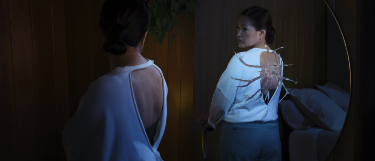References: 1.
Wingerchuk DM, Hogancamp WF, O’Brien PC, Weinshenker BG. The
clinical course of
neuromyelitis optica (Devic’s syndrome).
Neurology.
1999;53(5):1107-1114.
2.
Kitley J, Leite MI, Nakashima I, et al. Prognostic factors
and disease course in aquaporin-4
antibody-positive patients with neuromyelitis optica spectrum disorder from the United
Kingdom and Japan.
Brain.
2012;135(pt
6):1834-1849.
3.
Jarius S, Ruprecht K, Wildemann B, et al. Contrasting disease patterns in seropositive and
seronegative neuromyelitis optica: a multicentre study of 175 patients.
J Neuroinflammation.
2012;9:14.
4.
Jiao Y, Fryer JP, Lennon VA,
et al. Updated estimate of AQP4-IgG serostatus and disability
outcome in neuromyelitis optica.
Neurology.
2013;81(14):1197-1204.
5.
Borisow M, Mori M, Kuwabara S, Scheel M, Paul F. Diagnosis and Treatment of NMO Spectrum Disorder and MOG-Encephalomyelitis.
Front Neurol.
2018;9:888.
6.
Piatek P, Domowicz M, Lewkowicz N, et al. C5a-preactivated neutrophils are critical for
autoimmune-induced astrocyte dysregulation in neuromyelitis optica spectrum disorder.
Front Immunol.
2018;9:1694.
7.
Winkler
A, Wrzos C, Haberl M, et al. Blood-brain barrier resealing in neuromyelitis optica
occurs independently of astrocyte regeneration.
J Clin Invest.
2021;131(5):e141694.
8.
Chamberlain JL, Huda S, Whittam DH, Matiello M, Morgan
BP, Jacob A. Role of complement and
potential of complement inhibitors in myasthenia gravis and neuromyelitis optica spectrum
disorders: a brief review.
J Neurol.
2021;268(5):1643-1664.
9.
Mealy MA, Kessler RA, Rimler Z, et al. Mortality in neuromyelitis optica is strongly
associated with African ancestry.
Neurol Neuroimmunol Neuroinflamm.
2018;5(4):e468.
